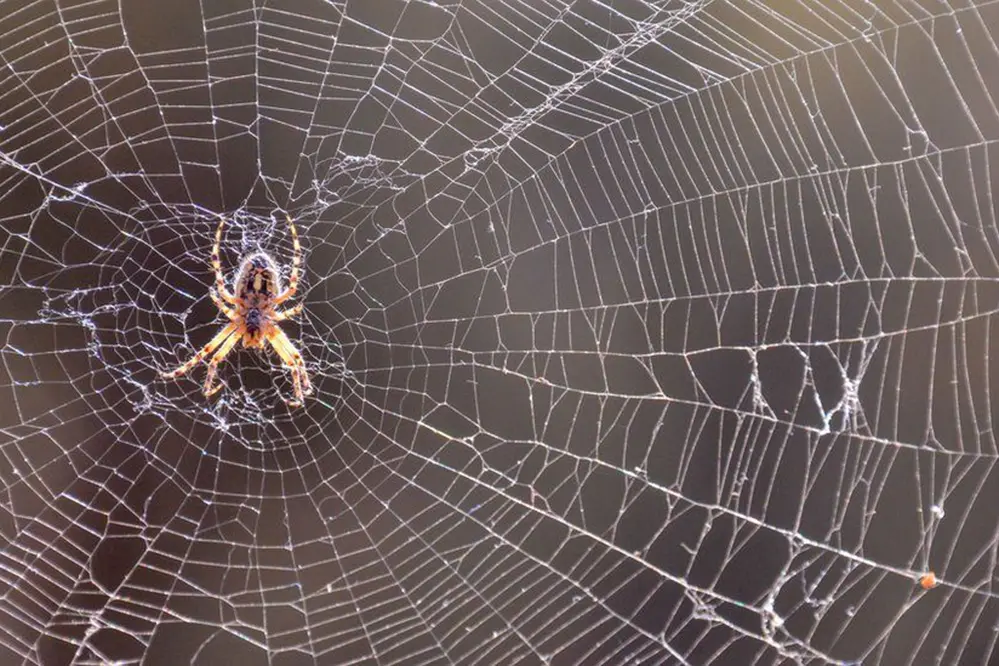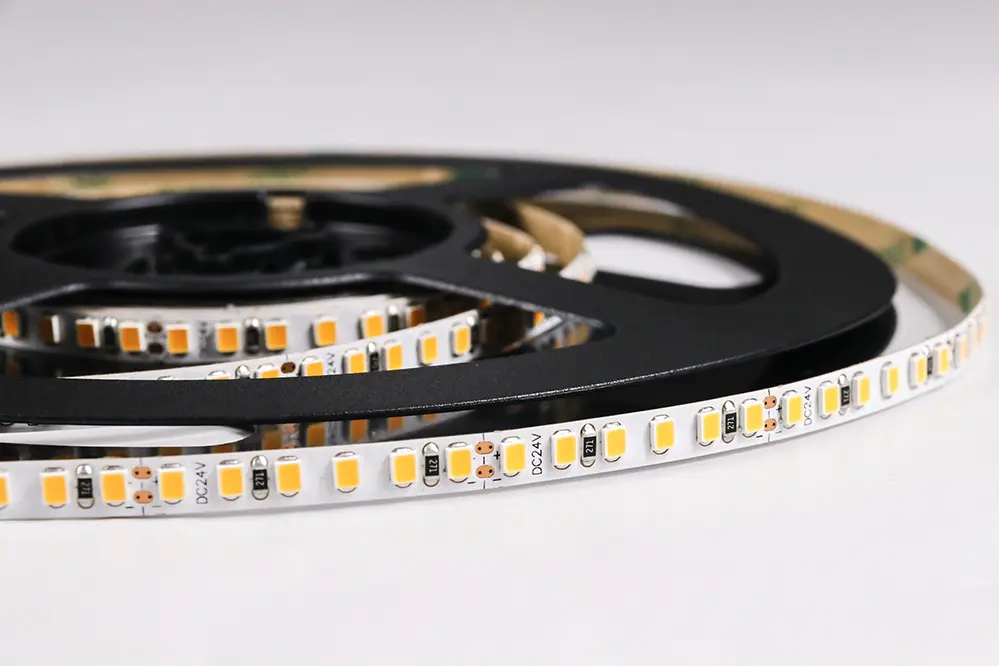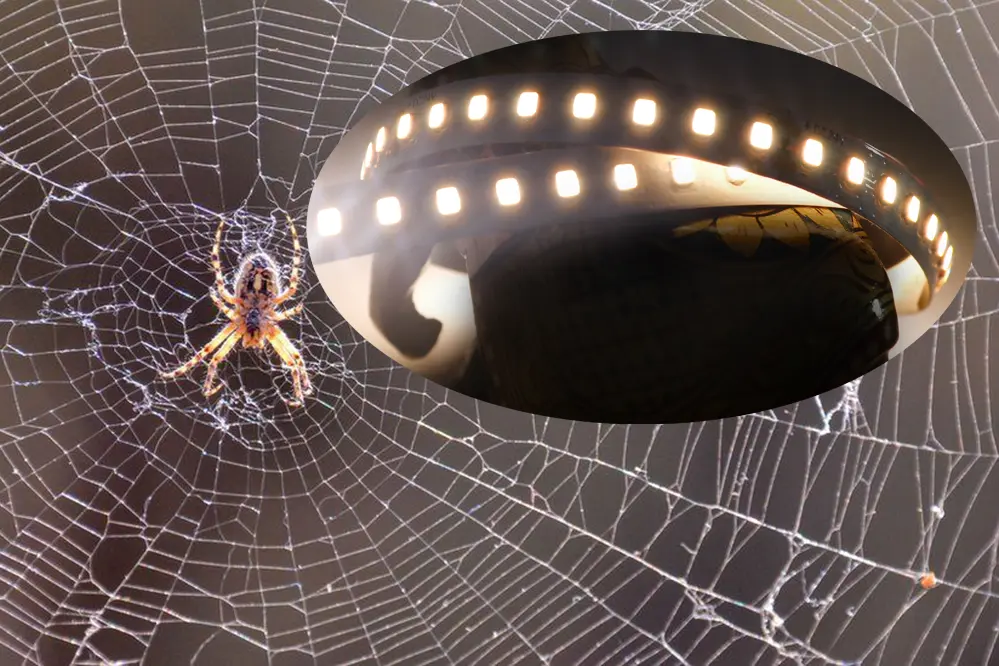Are you tired of seeing spiders under your LED strip lights? Wondering if these lights are attracting them? Look no further! In this blog post, we will explore the relationship between LED strip lights and spiders, providing you with insights and solutions to address this issue.
LED strip lights do not directly attract spiders. While spiders are not attracted to the light source itself, they may be drawn to the insects that are attracted to the light. LED lights emit a longer wavelength and higher color temperature, which have a weaker attraction to small insects, reducing the food sources for spiders.
Discover the characteristics of LED lights, how they compare to other light sources, and other factors that might attract spiders. We will also provide practical tips on how to address the issue of spiders under LED lights. Keep reading to find out more!
Understanding Spider Attraction to Light

Spiders are often thought to be attracted to light sources; however, their relationship with light is indirect. While many species lack the phototaxis observed in insects, spiders capitalize on the increase in prey attracted to illuminated areas. Their presence near lights can be attributed more to their predatory nature, rather than an innate attraction to the light itself.
When it comes to understanding a spider’s presence in well-lit environments, we must consider their ecological strategy. They are opportunists, seeking not the brightness but the bounty that light inadvertently provides. The nexus of light and spider location is, therefore, not a direct attraction but a secondary consequence — the gathering of potential meals ensnared by the allure of luminescence.
Spiders and Their Prey: A Tangled Connection
Spiders do not seek light itself; they are drawn to the buffet of insects that are ensnared by its glow.
LED lights emit less heat, indirectly reducing spider-attracting insect activity around these lamps.
Ambient light turns into a strategic hunting ground for spiders as LED illumination inadvertently summons a nocturnal feast of insects.
This confluence of light and lure creates an ecological hot spot where spiders converge, spinning their webs amidst the luminescent snare.
By understanding that LED lights have a minimal direct attraction for spiders, one can appreciate the layered complexity of ecological interactions at play.
The Spectrum of Attraction: LED Light Wavelengths
LED lights emit a broad spectrum of lightwaves that differ in attractiveness to insects.
Within the visible light spectrum, certain wavelengths are more appealing to insects, influencing their movement and behavior significantly.
Notably, studies indicate that shorter wavelengths, corresponding to blue and ultraviolet light, tend to be more insect-attractive than longer wavelengths like yellow and red.
The fact that LEDs can be engineered to emit less of these shorter, insect-attracting wavelengths plays a critical role in their reduced allure for insects.
Consequently, such spectral properties of LED lights make them less conducive to spider activity, as they draw in fewer insect prey.
LED Strips Versus Traditional Bulbs

When comparing LED strip lighting to traditional bulbs, one must consider not only energy efficiency and longevity but also their impact on the local biota. Traditional incandescent bulbs emit a broader spectrum of light, including ultraviolet (UV) which is known to attract a myriad of insects that are prey for spiders. In contrast, the light from LED strips is more customizable and often emits wavelengths that are less attractive to insects. Thus, areas illuminated with LED strips tend to host fewer insects, thereby presenting a less enticing environment for spiders to hunt. Consequently, the type of lighting chosen can inadvertently shape the mini-ecosystem within a given space, directly affecting the prevalence of spiders and other insectivores.
Insect Attraction and Light Emission
LED lights emit wavelengths that are less alluring to insects compared to traditional light sources.
- Color Temperature: Higher color temperatures in LEDs are less inviting to insects.
- Ultraviolet Emission: LEDs typically lack UV light, reducing entomotic attraction.
- Wavelength: Longer wavelengths associated with LEDs are not preferred by many insects.
- Brightness: The lower lumen output in some LEDs can deter nocturnal insects.
This diminished attraction indirectly affects spider populations, which rely on these insects for food.
By altering the spectral qualities of lighting, we can impact insect and spider presence, creating a less hospitable environment for these arthropods.
The Efficiency Factor: Energy and Heat Considerations
LEDs exhibit superior energy efficiency profiles.
Compared to traditional incandescent bulbs, LEDs convert a higher percentage of electrical energy directly into light, resulting in significantly less wasted energy in the form of heat. This fundamental efficiency means that for the same level of luminosity, LEDs use less energy, thereby emitting less heat—a factor of utmost importance when considering insect attraction and, by extension, spider presence.
Heat dissipation in LEDs is remarkably lower.
The lower heat signature of LED lighting is notable—it affects insect behavior. Insects, often drawn to the warmth emitted by light sources, find LEDs less attractive because they emit less heat, thus minimizing the conditions that typically lure spiders seeking prey.
LEDs’ minimal heat output makes them ideal for controlling arachnid activity.
When devising strategies to diminish spider encounters, it’s prudent to consider the broader ecological dynamics. By installing LED lights that expend less heat and are energy efficient, one can reduce the incidental congregation of insects and thereby lower the likelihood of establishing a spider-friendly zone within their habitat.
Environmental Elements Drawing Spiders
Within the subtle interplay of light and shade, environmental elements exert significant sway over spider attraction. Humidity levels, abundant in some spaces, transform such areas into thriving habitats for insects, in turn, serving as a bountiful hunting ground for arachnids. As moisture congregates, so too does the potential for a spike in spider activity.
Similarly, the presence of foliage and woodsy debris can establish a microecosystem rich in spider prey. Often, these natural remnants generate a “bug magnet,” proffering a direct invitation to spiders on the prowl for sustenance. In the shadow of flora, spiders harness the advantageous cover, lurking for the opportune moment to claim their next meal.
Seeking Shelter: Spiders’ Habitats Indoors
Spiders covertly find refuge within our homes.
Nooks, crevices, and undisturbed spaces offer ideal hideouts. Whether seeking a haven from harsh external conditions, or zeroing in on pockets teeming with prey, domestic interiors present an array of attractive niches for spiders. Thus, our residences inadvertently become sanctuaries for these eight-legged companions, providing shelter and sustenance in the quiet corners of our dwellings.
Indoor environments can support diverse spider populations.
A home’s warmth is a magnet for spiders. It offers refuge and an ecosystem teeming with potential prey, creating a perfect storm for a spider seeking shelter. The inviting indoor temperatures facilitate spiders to stay active even during colder months.
Our living spaces are unwitting ecosystems. They provide warmth, shelter, and unceasing supplies from our own inadvertent actions. These conditions make our homes prime real estate for spiders seeking solace.
The Food Source Puzzle: What Brings Prey Indoors
The allure of indoor lighting is often a beacon for myriad flying insects. As these lights mimic the spectral qualities of natural light, they inadvertently become traps, luring in a smorgasbord of prey for spiders. This availability of food within walls is an open invitation.
Open windows and doors, unintended passageways to a spider’s next meal. They offer unhindered access for insects that are searching for warmth or light, inadvertently becoming prey.
Houseplants and overflowing garbage bins create microenvironments rich with organic matter. These breed small insects, like gnats and fruit flies, which in turn attract spiders on the prowl for sustenance. The inadvertent collection of detritus acts as magnets, bolstering an indoor food chain.
Leftover food and standing water are irresistible to a wide array of insects. These elements provide nourishment and hydration, making our homes not just a shelter but a comprehensive habitat for spiders. From food crumbs to moisture accumulation, it is like setting the table for a feast, welcoming spiders to dine in.
Strategies to Deter Unwanted Arachnids
To mitigate the involuntary invitation to arachnids, one must address the allure of their prey. Foremost, minimize exterior lighting that seeps indoors at night or opt for lights with a spectrum less visible to insects. Rigorous sanitation practices, including regular trash disposal and the sealing of food containers, can substantially reduce insect populations. Furthermore, proactive measures such as the use of essential oils known for repelling spiders—like peppermint, eucalyptus, or tea tree oil—can create a perimeter defense. Consider also the employment of physical barriers, with fine-mesh screens on windows and doors to deny entry. Lastly, landscapes should be maintained to prevent habitats conducive to spiders, ensuring foliage is trimmed away from the house to remove potential spider shelters.
Lighting Adjustments to Minimize Attraction
Use subdued lighting: Dimmer lights are less visible to insects at night, reducing the overall attractants within the vicinity of your property.
For indoor spaces, consider using shades or diffusers on LED lights to decrease their intensity and the distance they project. This combined with strategically placed task lighting minimizes the prominence of light sources that are potential beacons for bugs and, by extension, spiders. Shielding lights prevent emissions from spreading too broadly, thereby lowering the likelihood of insect congregation around your premises.
Employing lights with a warm color temperature can also be beneficial. LEDs in the range of 2200 to 2700 Kelvin are less perceivable by insects compared to cooler “daylight” options, resulting in fewer airborne critters that are prime spider prey. Select lighting solutions that are least attractive to these minute creatures to naturally curtail spider populations.
Lastly, consider the timing of when lights are used. Automating your lights with timers or smart home systems to reduce usage during peak insect activity times, like dusk, can dramatically cut down the potential for attracting insects. Adding motion sensors to outdoor lights ensures they are only activated as needed, which in turn minimizes continuous light emanating from your home, providing less incentive for spiders to linger.
Proactive Measures for Spider-Proofing Your Space
Minimizing spider encounters begins with altering their food supply landscape in and around your space.
- Eliminate clutter to remove potential spider habitats.
- Seal entry points such as cracks and gaps to deter spider ingress.
- Keep the area clean, particularly free of food residues and insects, to avoid attracting spiders.
- Deploy natural repellents such as essential oils known to deter spiders.
- Reduce outdoor lighting that may attract insects, spiders’ prey, to the vicinity of your space.
- Utilize window screens to prevent spiders from entering while windows are open.
- Regularly dust and vacuum, especially in corners and under furniture, to disrupt any spider activity.
Environmental modifications can significantly detract spiders from considering your area as their habitat.
Consistent application of these measures can maintain a space less appealing to spiders, providing peace of mind and comfort.
Conclusion
LED strip lights do not directly attract spiders. If spiders persist, it may be due to alternative food sources or environmental appeals in your home. To prevent spider infestations, maintain cleanliness, address structural issues, and use natural repellents. By understanding factors beyond lighting, you can create a less inviting environment for spiders.





